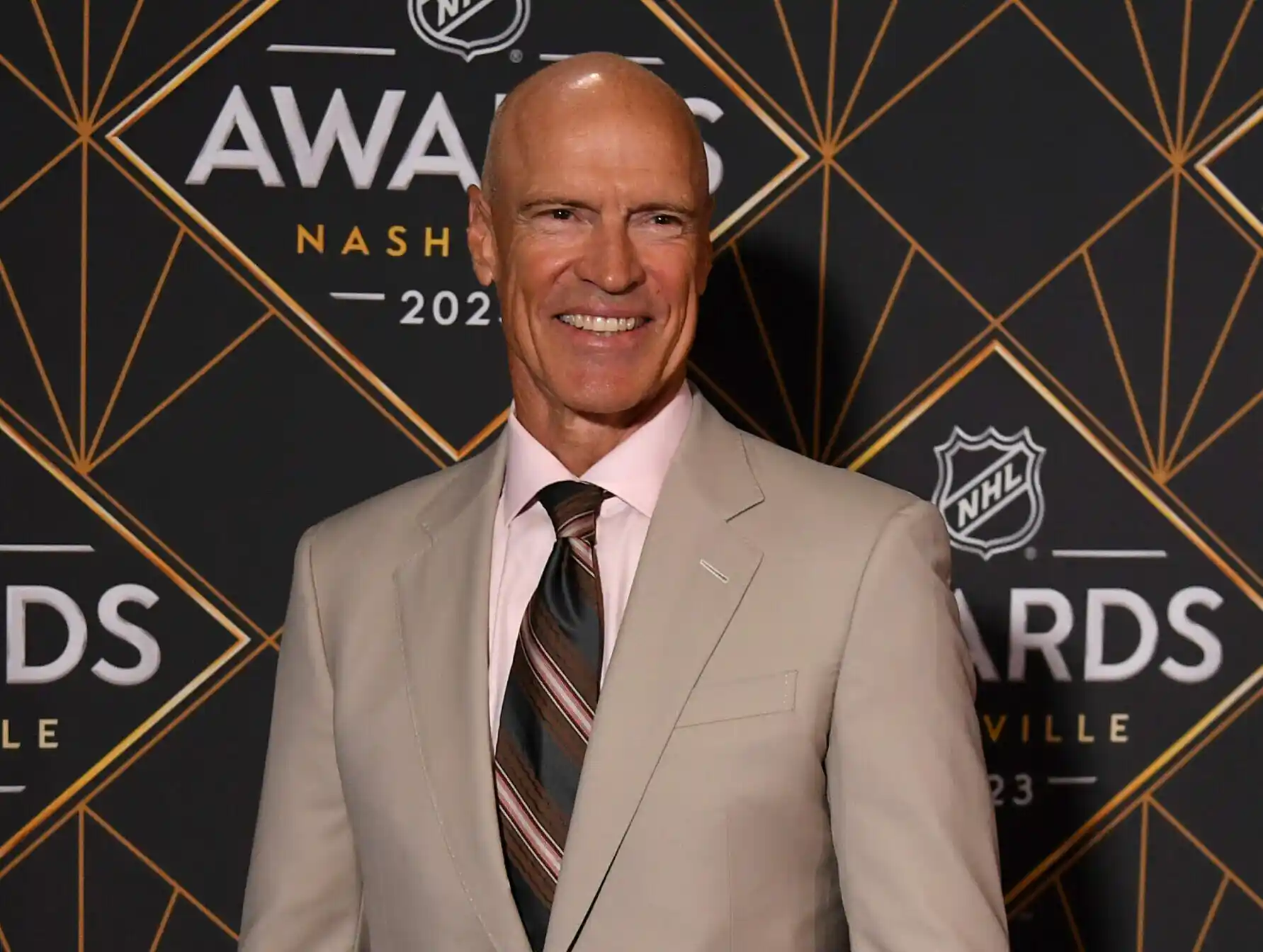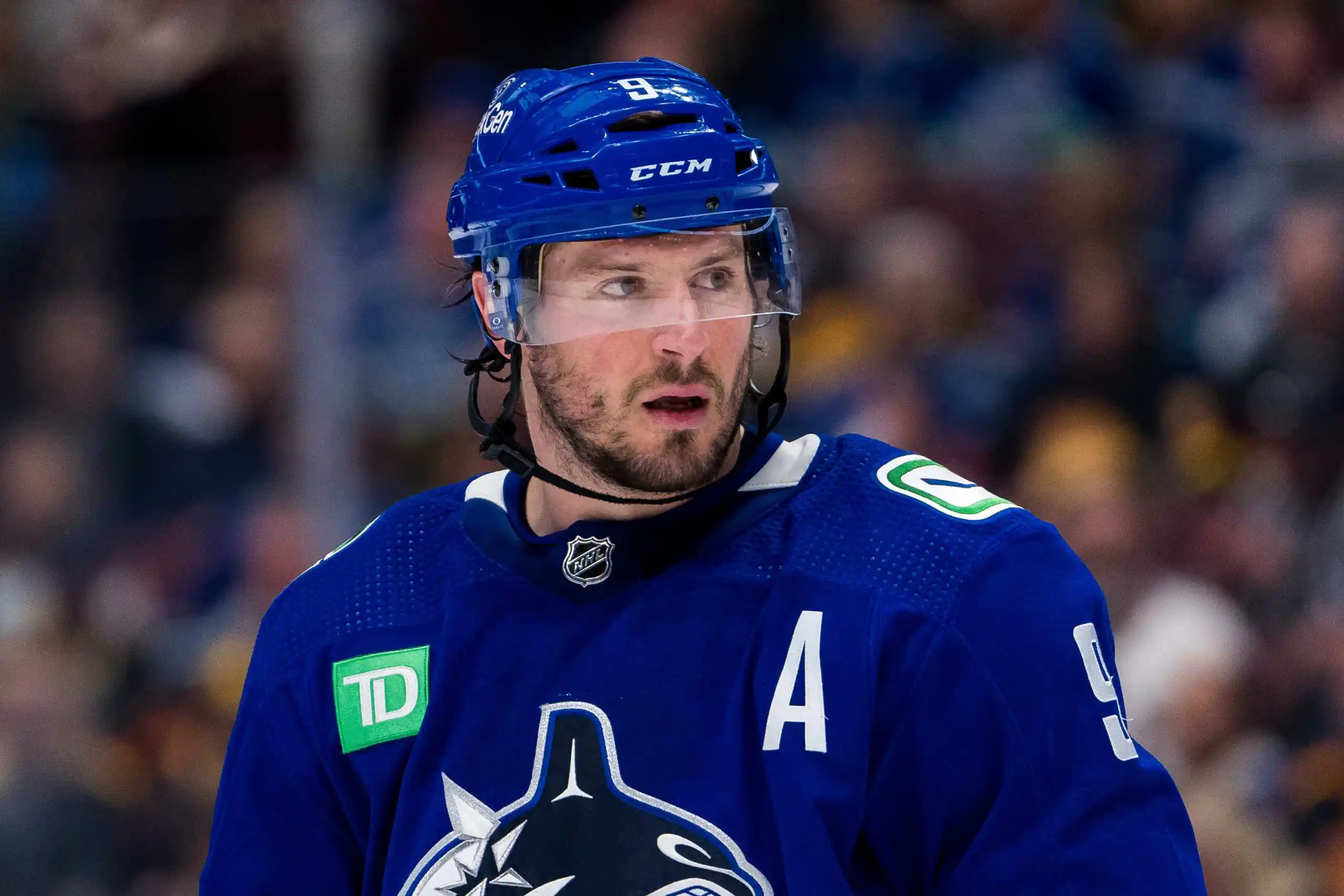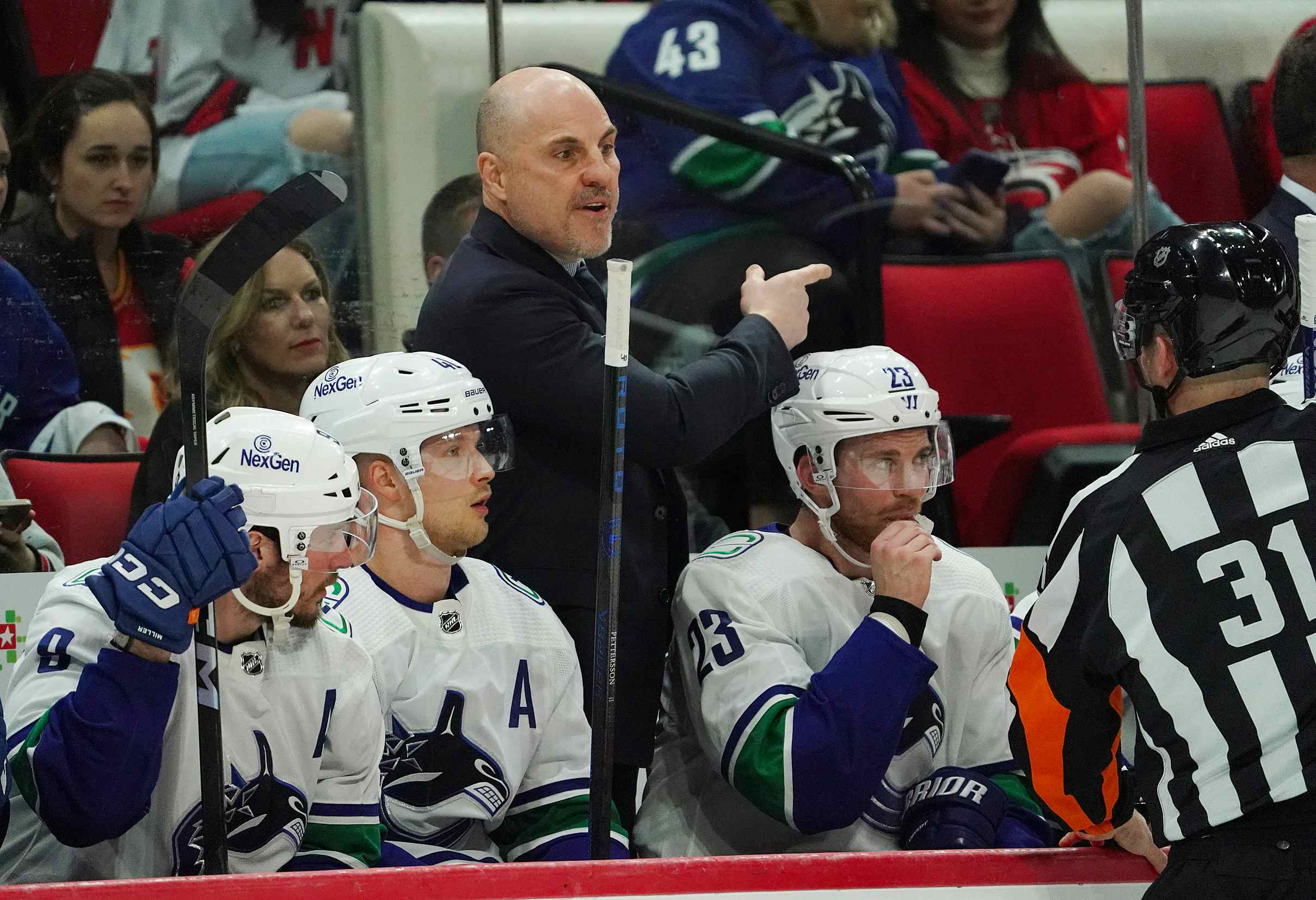The Canucks’ biggest organizational hole is at third line center…or is it?
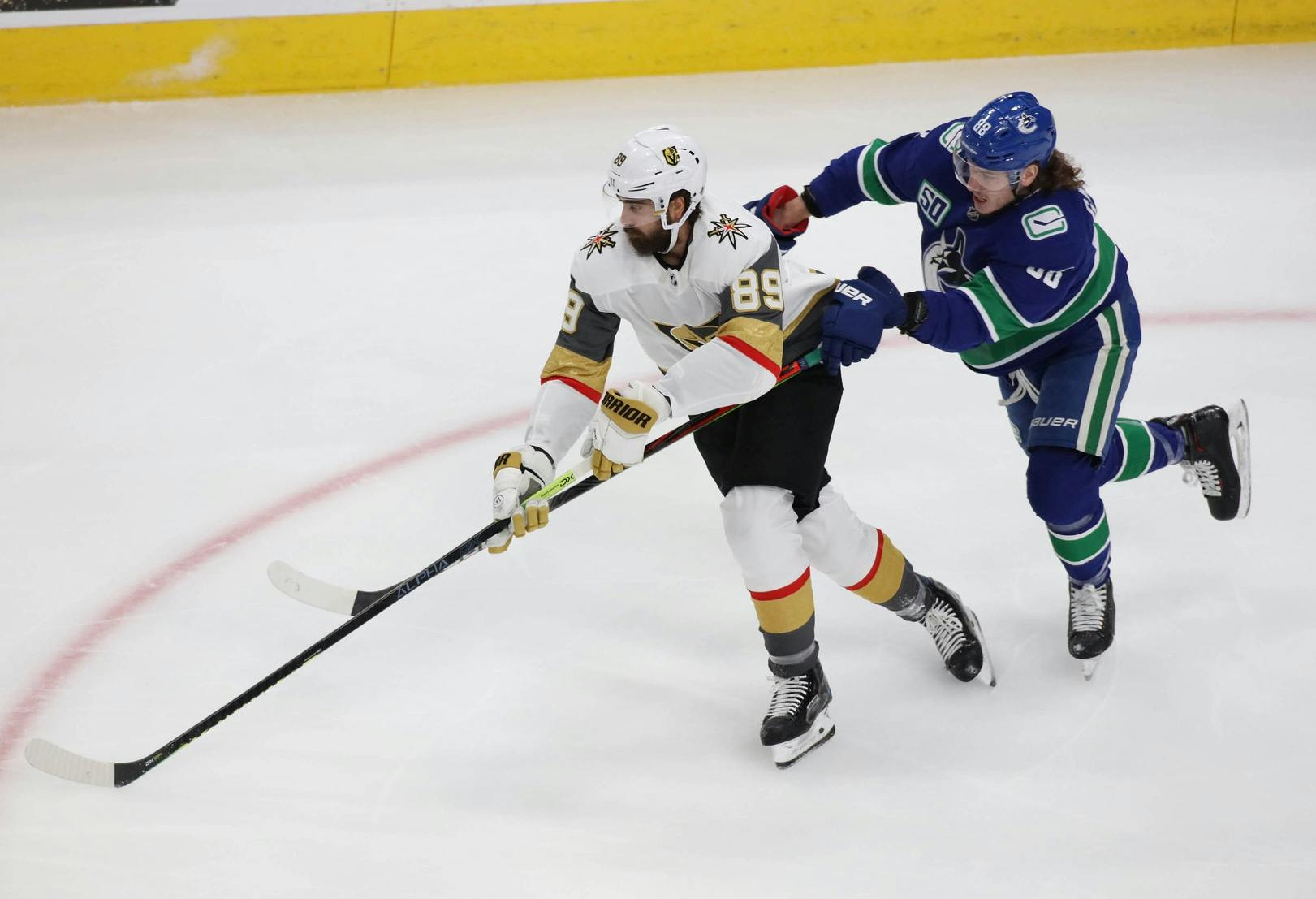
Since the Vancouver Canucks’ defeat at the hands of the Vegas Golden Knights this past postseason, much noise has been made about the team’s defensive struggles. Rightly so, much of the criticism has been focused on the blueline, where a handful of important changes have been made.
But not enough has been said about the Canucks’ defensive woes among the forward corps, where the only significant change has been the departures of Tyler Toffoli and Josh Leivo.
Simply put, while Vancouver’s top-six forwards — centremen Elias Pettersson and Bo Horvat included — demonstrated an impressive defensive acumen in 2019/20, the team’s bottom-six is almost entirely lacking any true own-zone stalwarts.
And, yes, chief on the list of missing ingredients is a true, traditional, checking line center.
The role of a classic third line center is one that is easily understood. They’re the players that are supposed to — ideally along with a couple of defensively-sound wingers — form a shutdown unit that can counter the opponent’s top line and help keep them off the scoresheet. In the modern era, the shutdown center gig has become a little more flexible; some teams have their shutdown guy on the second line, or even the first, like in Boston. But one thing hasn’t changed, and that’s that every successful team has one. The Tampa Bay Lightning have Anthony Cirelli, the Dallas Stars have Radek Faksa, the Boston Bruins, famously, have Patrice Bergeron. The Canucks, on the other hand, do not currently have anyone.
Or do they?
First, let’s look at the candidates to fill the role for Vancouver in 2021, and see how they stack up — or, in this case, don’t.
All Quality of Teammates/Competition charts courtesy of HockeyViz.com
Brandon Sutter
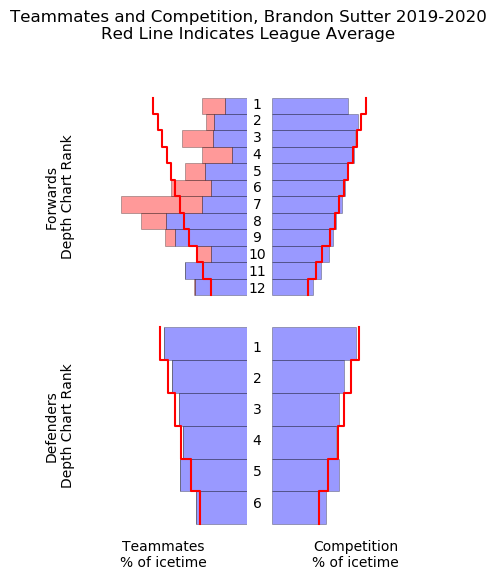
When Sutter arrived in Vancouver, he was touted as that prototypical third line, shutdown center. Heck, that was the whole rationale behind flipping Nick Bonino, an ostensibly more talented but supposedly less defensively-responsible center, for him.
The only problem is that Sutter was never really a d-zone-oriented center before coming to the Canucks, and he certainly hasn’t been since. Whenever he’s been asked to play anything resembling shutdown minutes, Sutter has been caved in. For 2019/20, he faced the easiest competition of any center not named Adam Gaudette, and he still put up some of the weakest possession numbers on the entire roster. He may start a lot of his shifts in his own zone, but when it’s the opposing top line out there for a d-zone faceoff, Sutter is almost always on the wing or on the bench. He may be employed to kill penalties, but he’s not very effective at it, and he’s only really used by default.
In other words, Travis Green has learned a lesson that many pundits and fans are still failing to, that Brandon Sutter is not a shutdown center, and never has been. Firmly on the downside of his career, it’s also unlikely to be a skill that Sutter develops at this point.
Where Sutter fits in the lineup for the 2021 season is a bit of a mystery, but it should not be on a line expected to face off against elite competition.
Jay Beagle

Sort of like Sutter, Beagle arrived in Vancouver amid promises of the prototypical fourth-line center, though Beagle has done a far better job of delivering. He’s won faceoffs, killed penalties a little more successfully than Sutter and played against more-or-less league average competition.
One thing Beagle should absolutely not be asked to do at the ripe old age of 35, however, is play a larger role. Beagle gets hemmed in his own zone with regularity whilst playing against fellow fourth liners. He’s the sort of player who has fans holding their breath when he gets caught out against an opposing top line, and thus definitely not the sort who should get thrown out there against them by design.
Beagle’s probably fine as the fourth line center for another season — and maybe even the one after that, given his contract — but he won’t be moving any higher up the lineup than that.
Adam Gaudette

As far as the depth chart is concerned, Gaudette is the Canucks’ clear-cut third line center, in that he is the third-most talented centreman in the organization. And yet, he’d somehow be an even worse fit for a shutdown role than the two aforementioned names — and that’s saying something.
Now, to be entirely fair, Gaudette has already announced his intention to develop this aspect of his game — namedropping Bergeron as a specific role model in conversation with Daniel Wagner this offseason — and he’s certainly young enough to grow into it.
But given the evidence available thus far, you’ll have to put us in the “we’ll believe it when we see it” category.
No Canuck saw more sheltered minutes than Gaudette in 2019/20. Offensively, that paid off, with Gaudette pacing above 15 goals and 40 points as a sophomore. Defensively, where one would think avoiding the best the opponents have to offer might be of benefit, it decidedly did not.
Despite the weak competition and starting nearly 60% of his shifts in the offensive zone, Gaudette posted negative possession stats across the board. He wasn’t even a consideration for penalty kills or any other tough assignments, and his third line was used more as a third scoring unit than anything else. A fine strategy, but only if there’s someone else playing the shutdown minutes elsewhere on the roster. It’s a large part of the reason so many, intrepid editor David Quadrelli included, want to see Gaudette tried on the wing this upcoming season. Unfortunately, that still wouldn’t do anything about the hole at third line center.
Anyone Else In The Organization?
The newly signed Jayce Hawryluk and Marc Michaelis, of the Ottawa Senators and Minnesota State respectively, both come with strong two-way reputations, but either will find it difficult to earn a spot in the lineup, never mind significant minutes.
Beyond them, the Canucks don’t really have much in the pipeline when it comes to shutdown centers — or centers at all, really. Zack MacEwen has played there before, but he doesn’t have the wheels to be anywhere but the wing at the NHL level. Prospects like Aidan McDonagh, Carson Focht, and Linus Karlsson are years away, if they ever arrive at all.
But aren’t we forgetting someone?
Tyler Motte, Really?
Though he’s played exclusively on the wing since coming to Vancouver, and for almost the entirely of his NHL career in general, Motte was drafted as a center. As his coming out party in the playoffs proved, he’s also the most defensively-talented skater in the Canucks’ bottom-six (when Loui Eriksson’s out, anyway), and was probably the single player most responsible for their penalty-killing success. He can skate, and he can make opponents pay for any ill-timed turnovers.
It’s unknown whether or not Motte can succeed at center ice at the NHL level, especially when it comes to facing top-flight competition. His size would seem to be a mark against him, but there are a handful of centers that size out there playing significant shutdown roles, and maybe Motte could be the next.
Given the other options available, it would behoove coach Green to at least try Motte at center in the preseason, and to see how he does against various top lines. If it works, that’s a major issue solved.
And if it doesn’t, we’ve got one last fix to try before we start looking outside of the organization.
Bo Horvat
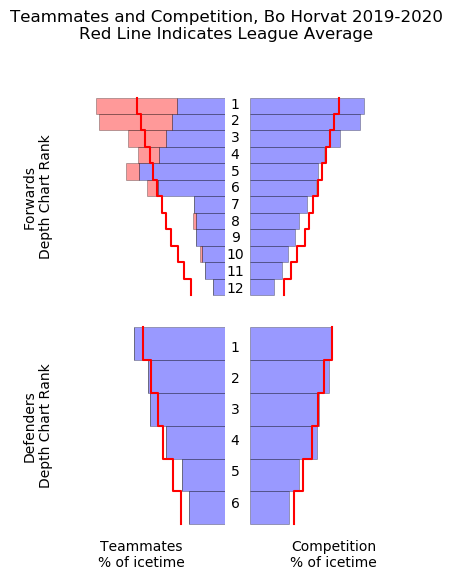
What the Canucks ultimately did in 2019/20, for lack of a true shutdown center, was spread the responsibility around. More often than not, however, the toughest of assignments fell on Horvat’s shoulders.
No Canuck forward faced top lines more often than Horvat, so if anyone was the shutdown center, it was him. Despite that, he still paced for a career season offensively and then led the league in postseason goal-scoring until well into the Stanley Cup Finals.
But Horvat’s defensive game also slipped a bit, and it’s not too difficult to decipher the reason. Asked to play both a shutdown role and a top-six scoring role, Horvat is a player torn between too many responsibilities.
One answer to the conundrum would be to find someone else to take on the shutdown duties and leave Horvat to more unencumbered offensive opportunities, but that’s a fruitless search at the moment.
Alternatively, Green could lean into Horvat as a shutdown center, equip him with a couple of defensively-oriented wingers — honestly, Tanner Pearson and Loui Eriksson worked just fine in this regard last season — and start playing him more exclusively against top competition.
Bump Horvat down to the third line — though he’d still likely be playing the second-most minutes — and bring Gaudette up to the second. Give some of Horvat’s offensive starts to Gaudette, and why not send a few more of them Pettersson’s way, too.
It’s an unconventional solution, but it’s not one without precedent. Hockey history is heavy with captains who helped their teams win by foregoing scoring totals in favour of greater defensive responsibilities. Steve Yzerman did it in Detroit, and it elevated his squad from Dead Things to Cup Champs. Does Horvat have a similar transformation in him?
What About Elias Pettersson?

By the same token, it’s of course possible to give Pettersson a larger shutdown role instead of Horvat. Pettersson’s minutes were mildly sheltered in 2019/20, but he’s always performed well against competition of all varieties, and his defensive acumen remains the most underrated component of his game.
If Patrice Bergeron can be the shutdown center and the top line center in Boston, why can’t Pettersson do the same in Vancouver?
Well, he probably could if he set his mind to it. But it’s probably best if he doesn’t, because that’s not where his truest talents lie.
Simply put, Pettersson is uniquely talented offensively, and has the potential to become one of the league’s true scoring elites. Putting him into as many offensive opportunities as possible should be the goal for the Canucks. Any defensive prowess he demonstrates on top of that is just gravy, but it should never be the focus of Pettersson’s deployment.
Especially not when the Canucks have other options, even ones with far more question marks than exclamation points.
Recent articles from Stephan Roget


